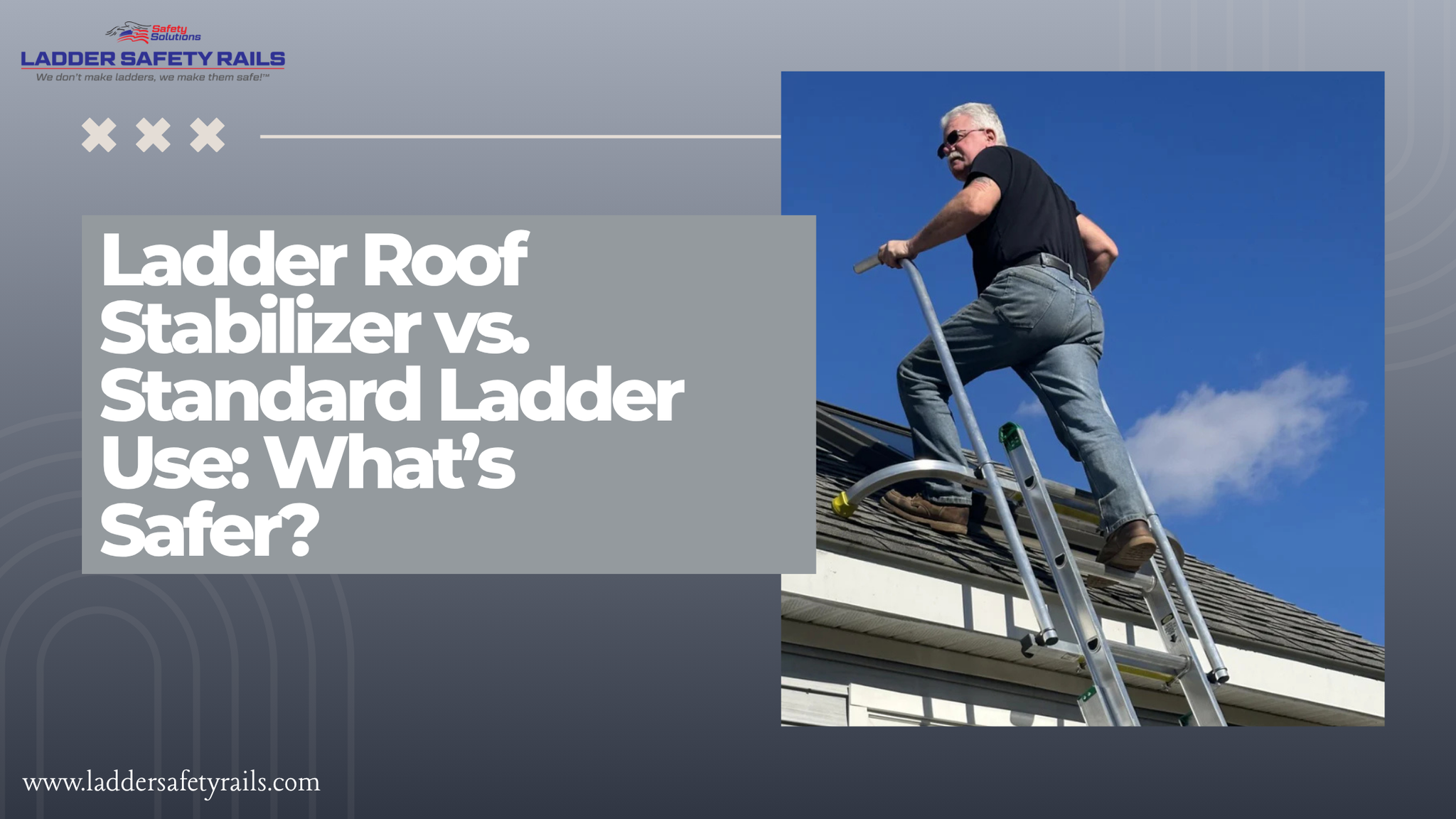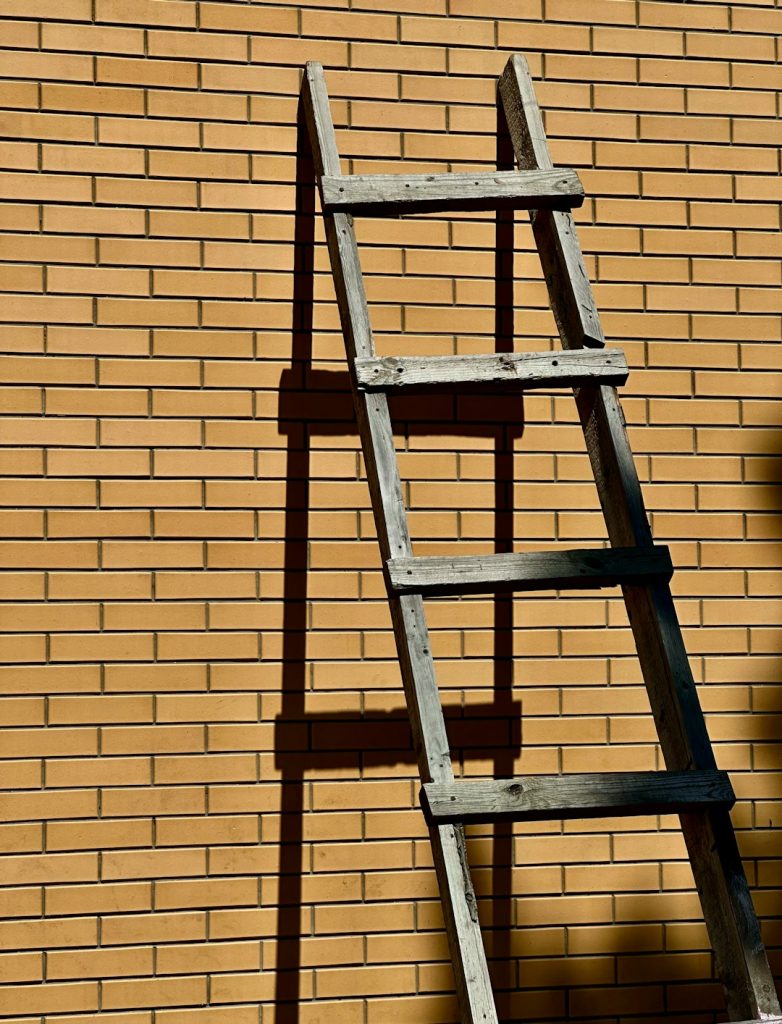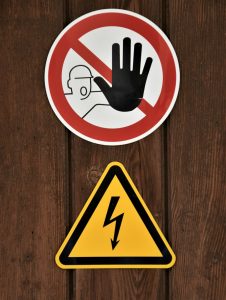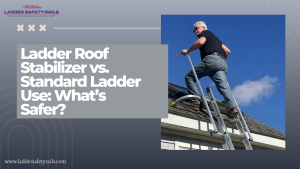Are you sure you know the right ladder safety rules? Using a ladder might seem simple, but one wrong step can lead to serious accidents.
This article will help you spot which ladder safety guidelines are truly correct. By understanding these key tips, you can protect yourself and others every time you climb. Keep reading to learn how to stay safe and avoid common mistakes that many people overlook.
Your safety depends on knowing the right steps—don’t miss out!

Credit: www.safetyandhealthmagazine.com
Choosing The Right Ladder
Choosing the right ladder is vital for safety and efficiency. The correct ladder supports your weight and fits the task. Selecting poorly can cause accidents or damage. Consider the type, weight capacity, and material before buying or using a ladder.
Types Of Ladders
Ladders come in various types for different jobs. Step ladders are good for indoor tasks. Extension ladders reach higher places. Platform ladders offer a stable standing area. Folding ladders are compact and easy to store. Choose a ladder type based on the work height and location.
Weight Capacity
Every ladder has a weight limit, called duty rating. It includes your weight plus tools and materials. Common ratings are:
- Type III: Light duty, up to 200 lbs
- Type II: Medium duty, up to 225 lbs
- Type I: Heavy duty, up to 250 lbs
- Type IA: Extra heavy, up to 300 lbs
- Type IAA: Special heavy, up to 375 lbs
Always pick a ladder that supports your total weight safely.
Material Considerations
Ladders are made from wood, aluminum, or fiberglass. Wood ladders resist electricity but can be heavy and less durable. Aluminum ladders are lightweight and rust-resistant but conduct electricity. Fiberglass ladders are strong, non-conductive, and weather-resistant. Choose material based on your work environment and safety needs.

Credit: www.facebook.com
Inspecting Before Use
Inspecting a ladder before each use is essential for safety. A careful check helps spot issues that might cause accidents. Simple inspections can prevent falls and injuries on the job or at home.
Checking For Damage
Look closely for cracks, bends, or broken parts on the ladder. Check the rungs and side rails for any signs of wear. Make sure the ladder’s feet are intact and not worn out.
Damaged ladders should never be used. Even small cracks can lead to failure under weight.
Cleaning And Maintenance
Remove dirt, grease, or oil from the ladder before use. Slippery surfaces increase the risk of falling. Use a damp cloth and mild soap for cleaning.
Keep moving parts like locks and hinges free of dust and rust. Lubricate these parts if needed to ensure smooth operation.
Ensuring Stability
Set the ladder on a flat, stable surface before climbing. Uneven ground can cause the ladder to tip over. Check that all locks and braces are secure.
Test the ladder’s balance by gently shaking it. If it wobbles, reposition or do not use it. Stability is key to safe ladder use.
Proper Ladder Setup
Setting up a ladder may seem straightforward, but improper setup is one of the most common causes of ladder-related accidents. Whether you’re cleaning gutters, painting walls, or fixing a roof, taking the time to ensure a safe and stable ladder setup can make all the difference. Let’s break down the key aspects of proper ladder setup to keep you safe and confident while working at heights.
Level Ground Placement
Always place your ladder on firm, level ground. Uneven or soft surfaces can cause the ladder to tilt or sink, creating a serious hazard. If the ground is uneven, use a ladder leveling device to stabilize it or reposition the ladder entirely.
Avoid setting up a ladder on slippery surfaces, like wet grass or smooth tiles. If you must work on a slick surface, use non-slip mats or secure the area before setting up the ladder. Ensuring a solid base is the first step to avoiding unnecessary risks.
Correct Angle Positioning
The angle of your ladder is crucial for stability. A good rule of thumb is the “4-to-1 rule”: for every four feet of height, the base of the ladder should be one foot away from the wall. This creates a safe climbing angle that prevents the ladder from tipping backward or sliding forward.
To check the angle, stand with your feet at the base of the ladder and extend your arms. If your hands can comfortably touch the ladder’s rungs, the angle is likely correct. Always double-check before climbing to avoid dangerous miscalculations.
Securing The Ladder
Never climb a ladder without ensuring it’s properly secured. Use safety straps, ties, or brackets to anchor the ladder to a fixed structure. This prevents the ladder from wobbling or slipping as you work.
If you’re using an extension ladder, make sure the top is resting securely against the wall or structure and not on unstable surfaces like gutters. Don’t forget to inspect the locks and hinges to verify they’re fully engaged. A secured ladder is a safer ladder, and it only takes a few moments to check.
Safe Climbing Practices
Climbing a ladder safely is more than just a cautious step—it’s about maintaining control and balance at every moment. Adopting the right climbing techniques reduces the risk of falls and injuries. Let’s dive into key practices that keep you steady and secure while ascending or descending ladders.
Three-point Contact Rule
Have you ever heard about keeping three points of contact on a ladder? It means always having two hands and one foot, or two feet and one hand, firmly on the ladder. This steady grip keeps you balanced and prevents sudden slips.
Try to avoid carrying anything that distracts you from this rule. Imagine reaching for a tool while only holding with one hand—your risk of falling goes up dramatically. Make it a habit to maintain this contact until you safely reach the top or bottom.
Avoiding Overreaching
Overreaching is a silent danger. When you stretch too far to one side, the ladder can tip, throwing you off balance. Instead, keep your body centered between the ladder rails and move the ladder closer to your work area.
Ask yourself: Is that extra stretch really worth the risk? Staying close to the ladder’s center keeps your weight evenly distributed and your footing secure. It’s a simple step that can save you from serious accidents.
Carrying Tools Safely
Carrying tools while climbing can be tricky. Holding items in your hands means you can’t follow the three-point contact rule properly. Use a tool belt or a tool bag that hangs securely from your waist to keep your hands free.
Think about your last ladder climb with tools—did you carry anything by hand? If so, try switching to a tool belt next time. This small change lets you climb safely without sacrificing convenience or speed.
Using Ladders In Different Conditions
Using ladders safely in various conditions is vital to prevent accidents. Different environments bring unique challenges. Understanding how to handle these can protect you from falls and injuries.
Wet Or Slippery Surfaces
Wet or slippery surfaces increase the risk of ladder slips. Always check the ground before placing your ladder. Avoid using ladders on icy, muddy, or oily spots. Use ladder stabilizers or non-slip feet for extra grip. Dry off ladder steps if they become wet during use.
Working Near Electrical Hazards
Ladders near electrical sources require caution. Metal ladders conduct electricity and should be avoided near power lines. Use fiberglass or wooden ladders in these areas. Keep a safe distance from live wires. Always assume wires are live and dangerous.
Outdoor Vs Indoor Use
Ladders designed for outdoor use are usually more durable. They resist weather and rough surfaces better than indoor ladders. Indoor ladders are lighter and easier to move on smooth floors. Always choose the right ladder type for the setting. Store ladders properly to avoid damage from weather or moisture.

Credit: laddersafetyrails.com
Common Ladder Safety Mistakes
Ladders are essential tools for many tasks, but they come with risks. Mistakes in ladder use often lead to accidents, injuries, or worse. Recognizing common ladder safety errors helps prevent these issues. Below are key mistakes people make and how to avoid them.
Ignoring Weight Limits
Every ladder has a maximum weight capacity. Exceeding this limit weakens its structure. Overloading can lead to sudden breaks or collapse. Always check the ladder’s label for its weight rating. Factor in your weight, tools, and materials. Using the wrong ladder for heavy tasks puts you at serious risk.
Improper Ladder Angle
Setting the ladder at the wrong angle increases instability. A ladder too steep may tip backward. A ladder with a shallow angle can slide forward. The ideal angle is 75 degrees, or a 4:1 ratio. For every 4 feet of height, place the base 1 foot away from the wall. Use this formula to ensure stability.
Failing To Secure Ladder
An unsecured ladder is a major hazard. It can wobble or slip during use. Always place the ladder on a firm, level surface. Use ladder stabilizers or anti-slip mats when needed. Check that the feet are secure and won’t move unexpectedly. Never rely on makeshift supports like rocks or boards.
Emergency Preparedness
When working with ladders, accidents can happen even if you follow all safety protocols. That’s why emergency preparedness is a critical part of ladder safety. Knowing how to respond quickly and effectively can make all the difference in minimizing injury and ensuring proper care.
What To Do In A Fall
A fall can be disorienting and scary, but staying calm is essential. If you fall or witness someone falling, assess the situation immediately. Is the injured person conscious and responsive?
- If they are conscious, encourage them to remain still to avoid worsening any potential injuries.
- If they are unconscious, check their breathing and pulse before moving further.
- Call for help right away if the fall seems severe.
It’s also helpful to remember to never move someone unless they are in immediate danger. Moving them could aggravate injuries, especially if it involves their neck or back.
First Aid Basics
Basic first aid skills can be lifesaving in ladder-related accidents. Do you know how to stop bleeding or immobilize a limb? Here are a few quick tips:
- Apply firm pressure to any bleeding wound using a clean cloth.
- If you suspect a fracture, use a makeshift splint to keep the limb stable.
- For head injuries, monitor the person closely for signs of dizziness or confusion, as these could indicate a concussion.
Keep a well-stocked first aid kit accessible at all times. Simple items like bandages, gauze, and antiseptic wipes can go a long way in providing immediate care.
When To Seek Medical Help
Not all injuries require an emergency room visit, but how do you know when to call for professional help? Use these guidelines:
- Seek immediate medical attention if the person is unconscious, has difficulty breathing, or experiences severe pain.
- Head injuries, even minor ones, should be evaluated by a doctor to rule out internal damage.
- If the injured person cannot move a limb or stand up, it’s time to involve medical professionals.
Trust your instincts. If something feels off or the injury doesn’t improve, always err on the side of caution and consult a healthcare provider.
Preparedness isn’t just about having the right tools. It’s about knowing how to act confidently when the unexpected happens. Are you ready?
Frequently Asked Questions
What Is The Correct Way To Position A Ladder?
Place the ladder on a stable, level surface. Ensure the ladder’s angle is approximately 75 degrees for optimal safety.
How Do I Secure A Ladder Properly?
Always use ladder stabilizers or tie-offs to prevent slipping. Avoid placing ladders near doors or high-traffic areas.
Should I Inspect A Ladder Before Using It?
Yes, always inspect ladders for damage, loose parts, or cracks. Check for proper functionality of hinges and locks.
Can I Use A Ladder In Bad Weather Conditions?
Avoid using ladders in strong winds, rain, or icy conditions. Poor weather increases the risk of accidents significantly.
Conclusion
Following ladder safety rules keeps you safe and avoids accidents. Always check the ladder’s condition before use. Set it on a flat, stable surface. Climb carefully, facing the ladder and holding the rails. Do not carry heavy tools while climbing.
Use the right ladder for the job. Staying alert and cautious prevents falls and injuries. Simple steps save lives. Remember, safety is your responsibility every time you use a ladder. Stay safe, work smart, and protect yourself.








